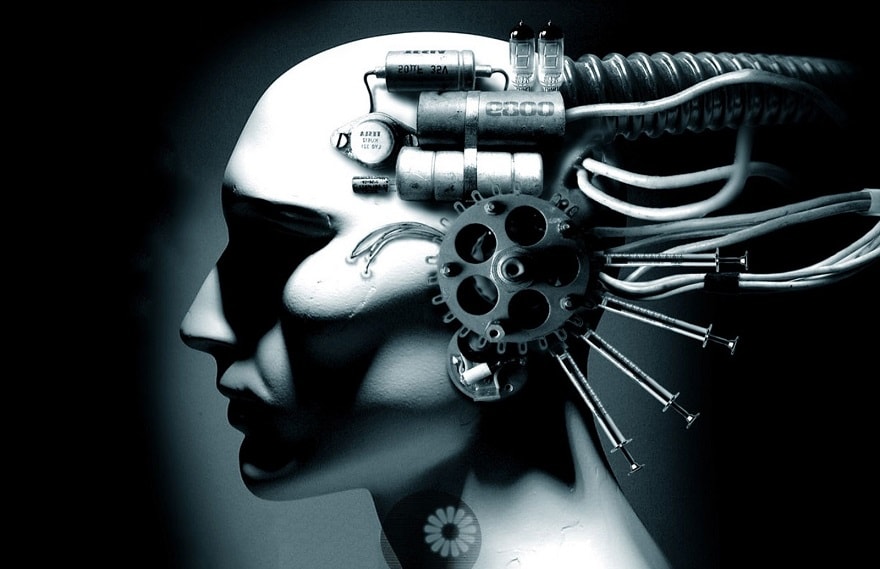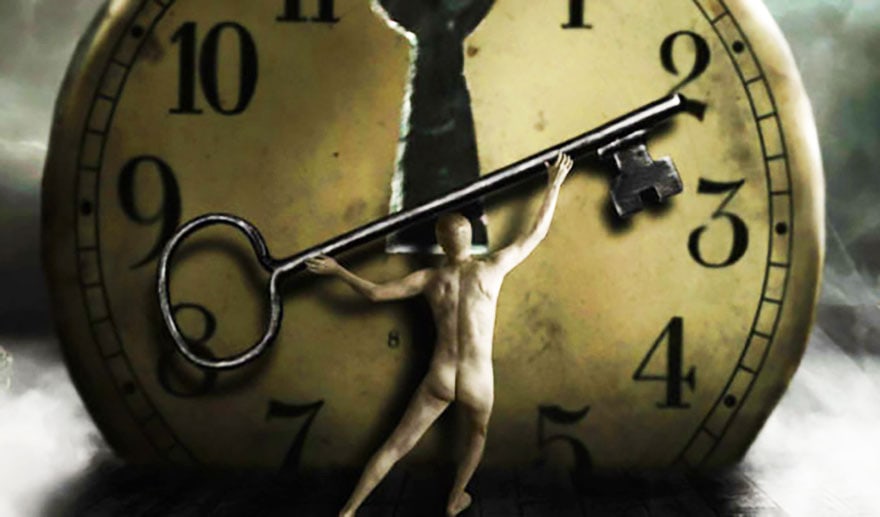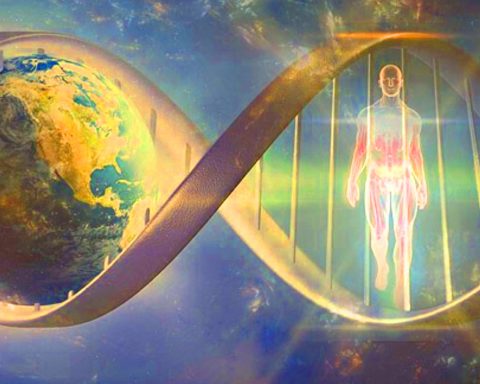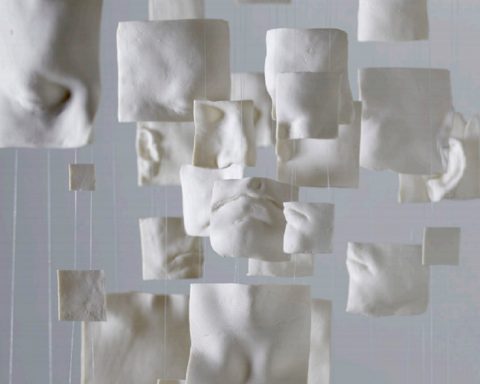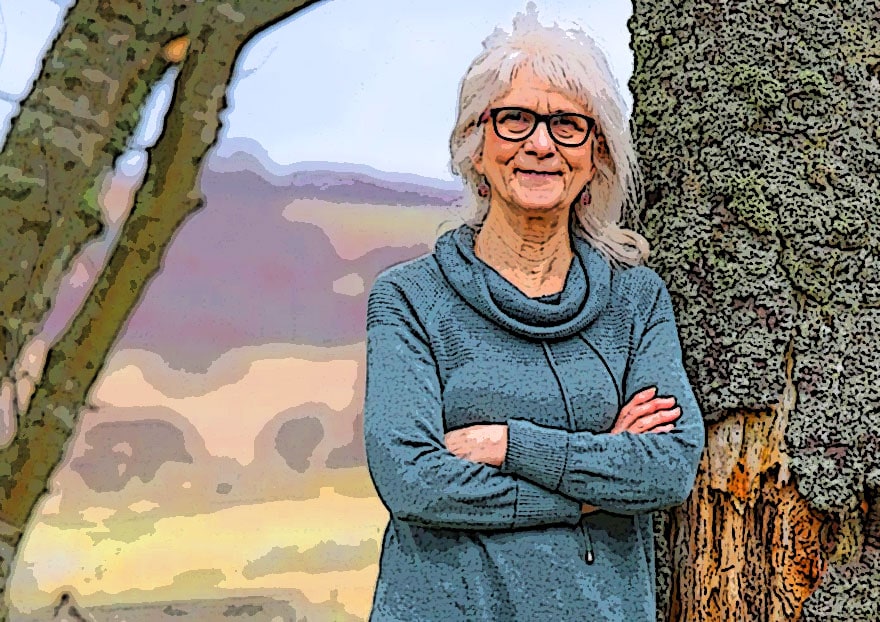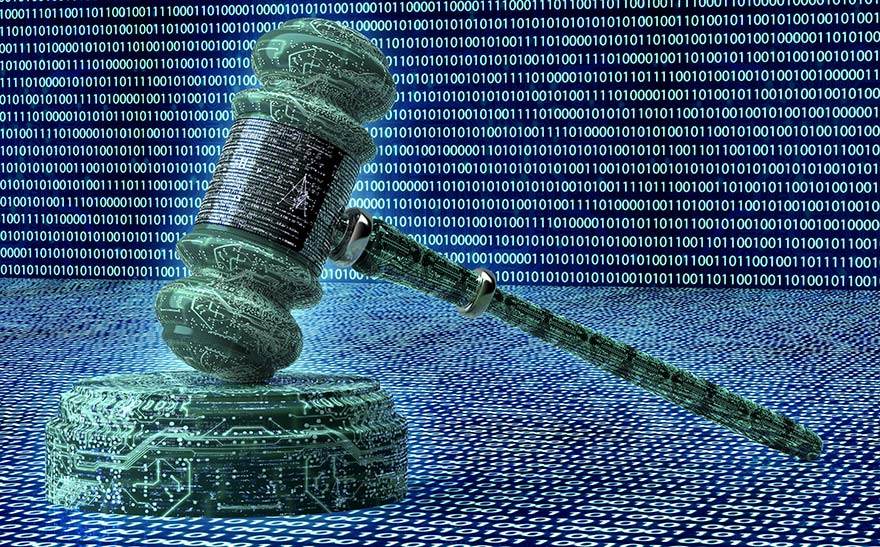Aujourd’hui vous pouvez faire séquencer votre ADN en une journée, et peut-être d’ici cinq ans, vous pourrez le réparer avec les technologies de correction dites CRISPR/cas9. Dans le même temps, Internet court-circuite vos manières de bouger (avec Uber et AirB&B), de vous ausculter (quantified self et télémédecine) ou d’apprendre (MOOCS, Wikipedia…). Même les robots se mettent à battre les champions de Go et se mettent à apprendre et évoluer, … Ferons-nous bientôt l’amour avec eux ? interrogent Laurent Alexandre et Jean-Michel Besnier dans un dialogue unique et musclé (voir leur livre Les robots font-ils l’amour ? Le transhumanisme en 12 questions, paru chez Dunod).
Le médecin et entrepreneur (fondateur de DNAVision) connu pour ses visions technofascinées et son ouvrage La Mort de la mort, paru en 2011, croise ses arguments avec ceux du philosophe, spécialiste des nouvelles technologies. Nous profitons de cette parution pour publier ici l’intervention de Jean-Michel Besnier au Festival vivant, le 17 septembre dernier.
Chez les humains, la vie se réduit-elle au vivant ? N’y a t-il plus lieu de distinguer entre vie biologique et vie humaine ? Que faut-il à un vivant pour faire un humain ?
Une vie artificielle est-elle appelée à remplacer la vie biologique, de même qu’une intelligence artificielle est annoncée devoir rendre obsolète l’intelligence biologique ? Que résulterait pour l’image de soi de l’humain une naturalisation intégrale de ses fonctions et comportements ?
Aux yeux du philosophe, ces questions exposent à réactiver un point de vue que ni la biologie de synthèse ni les NBICs ne seraient disposées à admettre – celui du vitalisme contre le mécanisme, voire celui du spiritualisme contre le matérialisme. Sans m’abandonner à cette réactivation qui donnerait la partie belle aux scientistes, je vous invite à ouvrir l’ouvrage de Ray Kurzweil, Humanité 2.0, sous-titré La Bible du changement, où l’on vous annonce qu’ « au début des années 2030, il n’y aura plus de distinction claire entre l’humain et la machine, entre la réalité virtuelle et la réalité réelle » (p.366) : vous n’avez aucune chance de trouver la vie définie dans cette Bible autrement qu’en termes d’information et de cybernétique. Le mot « vie » ne figure même pas dans l’index des matières. Mais il n’y a pas non plus d’entrée pour le mot « viande » dont on sait qu’il est utilisé par certains transhumanistes pour désigner la corporéité biologique – la chair, si l’on préfère – dont il faut se débarrasser afin d’échapper à la déchéance.
Prenez également le rapport de 2003 sur la « Convergence technologique pour l’amélioration des performances humaines », autrement baptisé Rapport NBICs : ses auteurs Rocco et Bainbridge y prophétisent surtout la pensée dite intégrale (le cerveau couplé avec Internet) et la transformation de l’humanité en un « cerveau unique, distribué et interconnecté ». Lorsqu’il est question de mentionner la biologie dans la prospective technologique décrite par ce Rapport, c’est pour invoquer sa convergence avec les nanosciences et l’encouragement à réaliser des processus cellulaires du corps vivant sur une puce de silicium. Bien sûr, on devine que la vie est conçue comme un phénomène par lequel des molécules complexes s’assemblent, tirent matière et énergie de leur environnement et se reproduisent – selon une définition communément admise. Elle résulte de myriades de processus qui relèvent de la chimie, de la physiologie et de la cognition. Mais abordée dans les termes des NBICs, elle se laisse décrire avant tout par référence à la construction de briques de Lego destinée à obtenir un Mécano géant assurément sans rapport avec la description de la vie qu’offrirait une phénoménologie de la chair…
Que la science appliquée au vivant manque la vie, voilà qui n’est pas un constat nouveau. Bergson le disait à sa façon : la science est incapable d’aborder la vie autrement que du point de vue de la mort, comme elle est incapable de parler du temps autrement qu’en termes d’espace. Elle procède toujours partes extra partes, en discrétisant ce qui est continu. Elle ne saurait donc nous aider à comprendre la vie.
Dans La Logique du vivant, François Jacob expliquait bien la différence entre le chien biologique et le chien familier, celui qu’on caresse ou siffle pour aller se promener : le premier est une créature abstraite et procède d’un modèle théorique contraint à épurer son objet pour expliquer son fonctionnement, tandis que le second est d’une complexité telle qu’il nécessite d’autres approches que celle de la science (cf. La souris, la mouche et l’homme pp.122-123) : « La biologie nous dit que, de nos deux chiens, le véritable est le chien moléculaire, écrit Jacob. Le chien familier n’en est qu’un pâle reflet, l’aspect accessible à nos sens ». Et il ajoute : « Si nous voulons comprendre le fonctionnement du chien, savoir d’où il vient, comment le soigner quand il est malade, c’est le chien moléculaire qu’il nous faut considérer »… De là à confondre le modèle et la réalité, et à oublier de caresser son chien et de l’emmener se promener, il n’y a qu’un pas, franchi aujourd’hui par tous ceux qui ne parlent plus de l’humain que comme d’un vivant comme les autres, dont on peut envisager la réparation, la modification, l’augmentation ou l’immortalité comme le résultat de stratégies biotechnologiques.
Un biologiste peut-il avoir le sentiment qu’on parle de l’objet de sa discipline quand il lit ces rescapés des camps de la mort qui, comme Primo Lévi, Imre Kertez ou Etty Hillesum, expriment leur amour de la vie : « La détresse est grande, et pourtant, il m’arrive souvent, écrit celle-ci, le soir quand le jour écoulé a sombré derrière moi dans les profondeurs, de longer d’un pas souple les barbelés, et toujours je sens monter de mon cœur – je n’y puis rien, c’est ainsi, cela vient d’une force élémentaire – la même incantation : la vie est une chose merveilleuse et grande »(Lettre 46 du 3 juillet 1943).
Dans les sciences du vivant, la confusion entre le biologique et l’humain, la réduction du second au premier, s’est sans doute trouvée amplifiée du fait de la prise de pouvoir explicative de la théorie de l’information. Schrödinger et Wiener y sont évidemment pour quelque chose : la définition par le premier de la vie comme néguentropie a amorcé un réductionnisme physicaliste qui ne pouvait plus permettre de parler de la vie à la manière des philosophes humanistes : que signifie au juste que la vie se nourrisse d’entropie négative ? Réponse : qu’elle évite sa décomposition rapide vers un état inerte d’équilibre. Comment le fait-elle ? Réponse : en mangeant, buvant, respirant… En échangeant avec son environnement, en se comportant comme un métabolisme capable de se débarrasser de toute l’entropie qu’il ne peut s’empêcher de produire (Cf. Qu’est-ce que la vie ? p.172). Cette caractérisation est propice à écarter toute traduction en termes de spiritualité, pour ne s’en tenir qu’à l’élémentaire du vivant.
Parce qu’elle était d’inspiration vitaliste, la définition de la vie, proposée par Bichat, comme « l’ensemble des forces qui résistent à la mort » pouvait encore être « récupérée » par un philosophe comme Schopenhauer et argumenter la thèse du vouloir-vivre universel, mais la définition de Schrödinger, issue de la physique, paraît moins susceptible d’alimenter une conception de la conscience où se reconnaîtrait l’humain dans le vivant. Ce n’est d’ailleurs pas un hasard si Schrödinger s’autorise seulement une passerelle avec l’indouisme pour donner sens à sa conception physicaliste de la vie : en effet, les Upanishads confondent sans réserves la conscience et le corps.
Peut-on faire autrement qu’attendre d’une théorie biologique qu’elle nous suggère aussi quelque chose à propos du sentiment de la vie que nous éprouvons ? Après tout, les idéalisations de la physique galiléenne ou newtonienne sont volontiers confrontées, par les physiciens eux-mêmes, à l’expérience concrète que nous faisons de l’espace et du temps. S’agissant de la vie, il est difficile de séparer complètement la théorie du vécu existentiel. On ne trouve pas déplacé que Nietzsche puise chez Darwin ou Spencer des raisons de justifier sa conception de la vie comme volonté de puissance : « Qu’est-ce que vivre ? – Vivre ?… c’est rejeter constamment hors de soi ce qui veut mourir. Vivre ?… c’est être cruel, c’est être impitoyable pour tout ce qui vieillit et s’affaiblit en nous, et même ailleurs… » (Le Gai Savoir § 26).
Avec la théorie de l’information comme matrice explicative dans les sciences du vivant, le défi de faire lien avec la vie phénoménologique est redoutable. D’où, sans doute, une résignation à l’abstraction et les illusions qui en résultent comme, par exemple, celle que l’immortalité serait possible grâce à la virtualisation et aux technologies numériques.
Qu’il soit bien clair que je n’incrimine en rien la biologie de se contenter de proposer de la vie une conception qui n’a pas grand-chose à voir avec ce que le commun des mortels en éprouve. Je considère ici les choses depuis la position des transhumanistes qui extrapolent les avancées scientifiques et prétendent les mettre au service des aspirations de notre espèce. Je sais bien que ces transhumanistes ne se laisseront pas convaincre de la nécessité de tenir compte du caractère irréductible de l’humain par rapport au programme de naturalisation ou de virtualisation porté par les technosciences.
Pourquoi ? Tout simplement parce qu’ils ont l’ambition d’en finir avec l’humain lui-même. Ceux qui restent à convaincre sont souvent victimes d’une sorte d’intimidation propre au milieu technoscientifique contemporain qui veut imposer un scientisme décomplexé par rapport à la philosophie et même aux sciences humaines. La situation de la biologie et de la médecine n’est pas facile dans ce contexte. Elles me semblent prise en otage et conduites à se compromettre avec ceux qui prennent le parti d’évacuer la dimension existentielle du concept de vie pour n’en conserver que la consistance biologique.
Si la biologie et la médecine pouvait se démarquer efficacement du discours des technoprophètes, on ne laisserait pas affirmer que les NBICs nous débarrasseront bientôt des limitations propres à l’humain, mais seulement que la mécanique corporelle sera de mieux en mieux réparée, au point que nos métabolismes pourront fonctionner sans fin. On refuserait d’associer les prophéties transhumanistes à une axiologie censée permettre de donner sens à notre existence. Ainsi, on admettrait que l’annonce de l’immortalité ne concerne rien d’humain, mais tout au plus que la perspective que l’animal en nous s’inscrive dans une cyclicité sans finalité.
Qu’on comprenne donc mon argumentation : en contraignant à retenir que la vie biologique n’épuise pas la vie humaine, que le biologiste fait simplement son métier de chercheur sans prétention normative lorsqu’il explique le vivant comme un système informationnel, je défie les transhumanistes de nous convaincre qu’ils portent l’espoir d’une réalisation des attentes de l’humain ou, plus simplement dit, qu’ils ouvrent la voie pour un posthumanisme.
Je voudrais apporter une démonstration à première vue abstraite de cette réfutation des prétentions du transhumanisme, en faisant l’hypothèse qu’on ne saurait parler de la vie sans convoquer la résistance d’une altérité, de quelque façon qu’on l’entende – une résistance qui disparaît quand la science est laplacienne et prétend éliminer le hasard pour imposer le déterminisme. L’une des raisons qui paraît conduire le transhumanisme à tenir sur l’immortalité un propos hyperbolique voire absurde (on va supprimer les limites biologiques imposées à la vie et ainsi réaliser le cauchemar d’une vie sans fin), c’est justement son ambition métaphysique d’en finir avec toute altérité. Cette ambition est formulée comme telle, en étant parfois référée à la Gnose, cette hérésie des premières heures de l’ère chrétienne dont c’est le projet explicite de faire triompher la science qui éliminera le Mal et toutes les limitations qui affectent l’humain depuis la Création. La science est la condition de la ré-alliance de l’homme avec le cosmos et du parachèvement de l’œuvre de Dieu. Or, toute la tradition hellénique ou judéo-chrétienne repose sur une conception de la vie qui suppose une altérité l’obligeant à s’organiser et à croître. Tournant le dos à cette tradition, le transhumanisme paraît assumer d’être une tentative idéologique de renouer avec le mythe d’un homme nouveau, débarrassé des formes de l’altérité qu’on avait traduite en termes de faute ou de péché originel.
Situant la vie au cœur de la philosophie de la nature qui sera dépassée par la philosophie de l’esprit, Hegel définit l’organisme vivant comme une unité intégrative négative, c’est-à-dire un ensemble réalisant la synthèse de composants, qui doit sa cohésion à ce qu’il s’oppose à ce qui n’est pas lui. De ce point de vue, la vie est dite « pour elle-même » ; elle est « son immédiateté » ; elle est « singularité en tant que négativité infinie » (cf. Encyclopédie, Abrégé § 216). La technicité de l’expression philosophique ne doit pas abuser : elle veut simplement dire que toute unité s’expérimente sur fond des forces auxquelles elle résiste et dont elle s’entretient. Imaginer que cette unité se dilue dans une unité supérieure (Dieu, le Grand Tout, le cyberespace ou ce que l’on voudra), c’est proprement laisser s’installer une entropie mortifère. En confondant la vie et le vivant, en lui appliquant le concept d’information –et, avec lui, l’ambition de « lever l’incertitude » de ses composants -, en évinçant l’humain et ses aléas constitutifs au profit de la seule mécanique biologique, en envisageant une vie artificielle construite comme un Lego, basée sur le clonage et la duplication, le transhumanisme élimine la négation caractéristique de l’activité vitale. Autrement dit, il coupe court au hasard et à la croissance sans lesquels il n’est pas de vie. Pour le transhumanisme, la négation est l’ennemie, le signe de l’incomplétude, de l’inachèvement, qui conteste la démiurgie dont les NBICs doivent se rendre capables. En s’imaginant promouvoir la nouvelle Renaissance qu’annonce le rapport NBICs, il prend la responsabilité d’altérer la représentation que l’humanité se faisait d’elle-même, lorsqu’elle affichait sa vocation à construire une histoire commune, sur la base d’un dépassement asymptotique de la finitude qui reste néanmoins son lot métaphysique.
On ne saurait reprocher le recours aux métaphores ou aux analogies pour expliquer que nous soyons des êtres vivants, des êtres parlants et que nous ayons construit une histoire riche d’institutions, d’œuvres et de symboles. C’est le signe même de l’activité spirituelle qui dit notre spécificité. Mais, comme toujours, le risque est de prendre la carte pour le territoire. Quand le modèle d’explication de ce qui fait de nous des vivants finit par occulter tout ce sur quoi s’est construit le spécifiquement humain, il y a péril en la demeure.
Le concept de rétroaction, associé à celui de message, permit à Wiener d’unifier les systèmes naturels et les dispositifs artificiels. Il n’en fallut pas plus pour que l’idée de fabriquer un organisme artificiel s’imposât et qu’elle fît oublier le libre-arbitre, l’esprit et la vie intérieure qu’on croyait le propre de l’humain. L’analogie a provoqué une réduction, sinon une régression ontologique et le succès contemporain de la cybernétique va rendre évidente ce qui résistait encore, il y a vingt ans, à savoir la thèse selon laquelle il en est du vivant et de l’humain comme de la machine auto-organisée, et la conclusion toute scientiste selon laquelle on doit abandonner à la littérature le privilège de commémorer une représentation de l’homme que le contexte économique et social rend chaque jour plus superflue.
Les biologistes, nouveaux maîtres à penser, en rajoutent à l’occasion sur la cybernétique, trop convaincus peut-être de devoir la scientificité de leur discipline aux modèles issus de la physique. Voyez François Jacob lui-même : « On n’interroge plus la vie aujourd’hui dans les laboratoires… C’est aux algorithmes du monde vivant que s’intéresse aujourd’hui la biologie » (La Logique du vivant p.321).
Je voudrais évoquer rapidement une position philosophique exprimée au milieu du vingtième siècle, qui croyait pouvoir échapper au spiritualisme tout en affrontant le réductionnisme cybernétique. Les efforts de Raymond Ruyer pour récuser cette propension au réductionnisme et la mythification contemporaine par les sciences et les techniques, paraitront à certains surannés : ils entendent soutenir que le feed-back n’explique pas tout le vivant car il est lui-même comme une invention vitale, – une invention qu’il faut expliquer sans invoquer les structures et les fonctions de l’organisme qu’elle ne peut supposer puisqu’elle les précède.
L’organisme comporte certes un ensemble de machines organiques, simulables par des artefacts, mais il y a en lui quelque chose de premier qui a fait cet ensemble de machines organiques. Il y a des machines dans l’organisme – ce qui ne veut pas dire que l’être organisé soit une machine. Il y a dans l’organisme un « x inobservable » (première cellule humaine) capable de construire, sans machine, des machines organiques elles-mêmes capables de construire des machines automatiques non-organiques qui, elles-mêmes, sont capables de contrôler des machines non automatiques… Tout cette charge critique, dirigée contre les illusions de la cybernétique, conduit à interdire d’oublier la dimension de conscience – cette aptitude au « survol auto-subjectif » des fonctions mécaniques dont l’humain est capable et que la cybernétique élimine trop vite, en la réduisant à une simple heuristique réflexive ou bien à un mystérieux avantage sélectif dont l’évolution de l’espèce humaine n’a plus besoin dans l’environnement technologisé qui s’est imposé à elle. La vie, ce n’est pas autre chose que la conscience, qui n’est pas l’appareil cérébral observable, comme le croient les transhumanistes adeptes du mind-uploading. La conscience est certes coextensive au cerveau (qui est pour elle une condition nécessaire mais pas suffisante, montrait Bergson), autant qu’elle l’est à l’embryon dont elle explique l’équipotentialité : dans l’embryogenèse et dans le fonctionnement cérébral, les différenciations qui s’établissent semblent indiquer que les organes ou les aires corticales « savent » ce qu’ils doivent faire, comme s’ils étaient permis grâce à ce « survol » général de l’organisme qu’on peut bien nommer « conscience vitale ». Le cerveau comme l’embryon possèdent, selon Ruyer, cette conscience primaire qu’on ne peut expliquer en termes de structure sans tomber dans une régression à l’infini (quelle structure première expliquerait donc l’apparition des structures ?). L’équipotentialité de l’organisme (durablement présente dans le cerveau) témoigne de cette conscience organique qu’on peut identifier à la vie.
Bien sûr, je ne méconnais pas les critiques qu’on adresse à Ruyer, notamment celle-ci : la conscience primaire ou organique, identifiée à la vie, n’explique pas la conscience seconde, celle qu’on associe à l’intentionnalité et au vécu existentiel. Renaud Barbaras le dit d’une phrase : « La détermination de la conscience à partir de la vie a pour contre-partie la restriction de la conscience au champ de la conscience vitale (conscience primaire) et, partant, l’incapacité à remonter à une conscience authentique : saisie du point de vue de la vie, c’est-à-dire comme domaine de survol, la conscience secondaire en sa dimension intentionnelle devient incompréhensible et ingénérable » (cf « Vie et extériorité. Le problème de la perception chez Ruyer » in Les études philosophiques, 2007/1, n°80, p.34). L’une des solutions suggérées par cette critique : concevoir que la conscience primaire, qui est tournée vers l’organisme, puisse se trouver confrontée à un monde extérieur qu’elle n’a pourtant pas les moyens de connaître en tant qu’organique ; parvenir à comprendre comment la conscience devient « conscience de quelque chose », comme le veulent les phénoménologues, et découvre ainsi la forme élémentaire de l’altérité constitutive du vécu.
La vie identifiée à la conscience selon Ruyer, constitue non seulement une objection au simplisme des transhumanistes qui s’en tiennent à l’explication informationnelle, mais aussi l’argument pour soutenir la conception intuitive qu’on s’en fait, quand on s’avise de son pouvoir de résister aux automatismes. Le sens commun sait qu’on ne vit que parce qu’on ne se laisse pas imposer les automatismes qui machinisent ou animalisent. Les neurobiologistes inspirés par les expériences de Libet le mettent en évidence : la conscience constitue un veto opposé aux décisions du cerveau ; elle limite les réactions instinctuelles que l’imagerie cérébrale met en lumière et, à cet égard, elle justifie le maintien du libre-arbitre tel que l’humain conscient l’expérimente.
Le transhumanisme est une machine de guerre contre l’altérité. C’est pourquoi il refuse pathétiquement la mort ou qu’il préfère au hasard des hybridations naturelles le clonage qui reproduit le même. La question du libre-arbitre n’en est pas une pour lui et il adhère à l’idée selon laquelle l’avenir de l’humain serait subordonné à son aptitude à produire toujours plus d’automatismes et de réactivité. Ce que Ruyer permet encore de suggérer, contre le réductionnisme issu de la cybernétique et de la théorie de l’information, c’est la part de l’humain qui est refoulé par les transhumanistes. La vie humaine réduite au fonctionnement du vivant, c’est en effet le refoulement de la dimension symbolique de l’existence humaine. Et c’est l’oubli de cette dimension qui rend flagrante la pauvreté du point de vue dit technoprogressiste dans les affaires humaines. J’y vois, pour ma part, la racine de l’inclination à laisser se dégrader l’image de soi de l’humain et la pente glissante qui le conduit à requérir des techniques un traitement de plus en plus indifférent aux valeurs humanistes (la dignité, le sens du défi, l’audace d’affirmer et de s’aventurer…). L’humain privé de sa vocation aux symboles qui font lien et élèvent, c’est un être qui ne veut plus qu’une chose : surtout ne pas mourir…
Examinons cet axiome inspiré par l’humanisme de toujours : L’humain se définit spécifiquement par le pouvoir de dire « Non ». C’est une thèse que les traditions helléniques et latines ont illustré de différentes façons, mais que les thèses freudiennes ont rendu évidentes aux éducateurs. On ne grandit que parce qu’on s’oppose, que parce qu’on refuse. Je cite souvent George Steiner démontrant, dans Après Babel, que l’humanité est née avec le mensonge, c’est-à-dire avec le pouvoir d’user du langage pour dire le contraire de la réalité.
Ce pouvoir de dire « Non » suppose évidemment qu’on dispose d’une conscience pour pouvoir résister aux automatismes de l’instinct. Ce que l’on nomme « symbolisme » décrit précisément ce que le transhumanisme écrase dans sa représentation de l’humain et, plus grave, ce que l’on semble prêt à éliminer de soi-même quand on accorde du crédit aux thèses immortalistes soutenues par les technoprophètes.
Trois traits sont souvent mis en relief pour décrire le symbolisme à l’origine de la culture humaine : 1) le pouvoir de désigner quelque chose in absentia, la faculté de l’inactuel : c’est la vertu du langage, que les transhumanistes méconnaissent en ne s’attachant qu’aux systèmes de signaux ; 2) l’interruption de la communication immédiate : c’est la faculté de résister aux automatismes que les technologues ne craignent pas de multiplier ; 3) la « distance psychique » qui qualifie le désintéressement dont les humains sont capables, par ex. dans leurs activités ludiques (j’emprunte cette caractérisation à Fabrice Colonna qui s’inspire à juste titre de Cassirer).
Aucun de ces traits n’est plus à l’abri dans la société et la prospective que privilégient les transhumanistes. J’ai privilégié ici une argumentation qui concernait la réduction de la vie au vivant exempté de symboles. J’aurais pu mettre l’accent sur le déploiement contemporain de l’obsession de la transparence (opposée à la vie privée et au mensonge), sur la jubilante mise à plat du monde, obtenue par les TICs, sur l’idéologie de la mondialisation et sur les fantasmes d’une intelligence collective. J’aurais retrouvé à chaque fois cette répulsion pour la négation qui est la marque de la déshumanisation assumée par les transhumanistes.
Jean-Michel Besnier, professeur émérite à l’université Paris-Sorbonne
S’abonner
Connexion
0 Commentaires
Inline Feedbacks
View all comments

